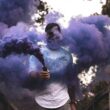Brand loyalty is growing – not shrinking. But brand loyalty drivers are also becoming more complex and harder to sustain.
- AVERAGE IN-MARKET CUSTOMER LOYALTY INCREASED 20% YOY
- 85% OF PATH-TO-PURCHASE LOYALTY DRIVERS CHANGE ORDER,
- NEW MULTIDIMENSIONAL VALUES APPEAR IN 96% OF SECTORS
Customer brand loyalty has increased on average 20 percent (20%) from 2019 to 2020 across 85 leading B2C, B2B, and D2C categories, which encompass 16 industry sectors and 833 brands, according to Brand Keys 25th annual Customer Loyalty Engagement Index® (CLEI), conducted by the New York-based brand engagement and customer loyalty research consultancy.

Analysts, consulting firms, and research practices that declared brand loyalty dead are talking about a consumer loyalty model that expired in 1990, noted Robert Passikoff, president of Brand Keys. “Back then loyalty was a black-and-white issue for consumers. But loyalty didn’t die. Rather, it has evolved in a more complex marketplace with more sophisticated consumers.”
How complex? Eighty-five percent (85%) of the path-to-purchase category brand loyalty drivers have new, consumer-generated configurations. Attribute, benefit, and value components that form the components of those drivers have grown more complex, more connected, and more emotional in 96% of the sectors.
Defining Loyalty for the 21st Century
Two decades into the 21st century the world has more complex brand and mediascapes. It’s more data-rich and technologically-intensive. “Consumers are more complex, connected, and complicated. They connect with each other before even considering connecting to a brand and assess loyalty relative to how they envision an Ideal brand”, said Passikoff.
It only takes a nanosecond for consumers to note how well a brand is seen to meet their expectations for the path-to-purchase drivers that defines behavior toward and fidelity to a brand. “That’s the 21st century version of brand loyalty”, said Passikoff. “Brands that can meet consumer expectations will always see higher levels of engagement, loyalty, and sales.”
Independent validations by the ARF verify that definition. Correlations between assessments based on this updated definition of loyalty and consumer behavior are 0.80+. “Marketers who focus on so-called “loyalty programs” expecting real brand allegiance, totally miss the point,” noted Passikoff.
“Marketers face a three-part challenge to leverage brand loyalty – as opposed to relying on legacy point programs,” noted Passikoff. “First, they need to recognize it is 2020, not 1985, and define “loyalty” as it applies to today’s consumers and the emerging marketplace. Second, they need to define objectives based on how customers actually view their category and identify what consumers expect, not based on tweet-counts or NPS scores, but on actual loyalty assessments. Finally, marketers need to design tactics that provide emotional brand engagement, not just more devalued points.”
“Do all that, and you’ll have more engaged, more loyal customers which comes hand-in-hand with increased sales and profits. That’s what real loyalty is all about today. It’s also a pretty good definition of successful marketing,” noted Passikoff.
Orders of Path-to-Purchase Brand Loyalty Drivers Change, Become More Complex
“Categories and brands are not static” noted Passikoff. They change, and how consumers view, compare, and buy, are governed by the order and level of expectation of the key loyalty drivers in any category.
Disruptive market forces, technology, innovation and relentless competition all play a part in how the order of brand loyalty drivers shift and why consumer-value components become more complex. “But the end results are predominantly driven by consumers’ attitudes and desires, much of which are unarticulated,” noted Passikoff, “and virtually all of which are emotionally-based.”
Brand Keys’ predictive research methodology identifies shifts 12 to 18 months before they appear in traditional brand tracking, focus groups or traditional research surveys based on a 20th century definition of loyalty.
The order of importance of drivers represents a value continuum that consumers navigate, largely unconsciously, in their purchase and loyalty journeys. Consumers hold specific expectations for each category loyalty driver and use their expectations for the Category Ideal as a yardstick against which they measure brand performance. Brands that best meet consumer expectations always have the most-loyal customers and, not-so-coincidently, the strongest sales and highest profits.
For example, in the Airline category in 2020, not only has the order of the loyalty drivers changed (and how consumers assess these brands), but the attribute, benefit, and value components that make up the drivers have become more complex, representing a genuine consumer perspective because the output of the model obviates the fact that consumers don’t think how they feel, they don’t say what they think, and don’t do what they say they will.
Top 20 Brands With 2020 Loyalty Focus
(Numbers in parentheses indicate YOY increases of in-market brand loyalty.)
- Chick-fil-A (+28%)
- Zara (+27%)
- WhatApp (+25%)
- Amazon (+23%)
- Netflix (+23%)
- Dunkin (+22%)
- Konica Minolta (+22%)
- Vans (+21%)
- Hyundai (+21%)
- MSNBC (+21%)
- Avis (+20%)
- Discover (+20%)
- PayPal (+19%)
- Samsung (+18%)
- Lyft (+18%)
- Apple (+17%)
- Chase (+17%)
- NFL (+16%)
- FOX (+16%)
- Google (+14%)
A complete list of the CLEI’s 85 categories and the brands that exhibited 2020 loyalty focus and best meet consumer expectations can be found here.
Methodology
For the 2020 CLEI survey, 62,474 consumers, 16 to 65 years of age from the nine US Census Regions, self-selected the categories in which they are consumers and the brands for which they are customers. This year, Brand Keys examined 85 categories and 833 brands.
Forty (40%) percent were interviewed by phone, forty (40%) percent via face-to-face interviews (to account for cell phone-only households), and twenty (20%) were interviewed online.
Brand Keys uses an independently-validated research methodology that fuses emotional and rational aspects of the categories, identifies four category-specific path-to-purchase behavioral loyalty drivers for the category-specific Ideal, and identifies the values that form the components of each driver, along with their percent-contribution to engagement, loyalty, and profitability.
Brand Keys’ research technique, a combination of psychological inquiry and statistical analyses, has a test/re-test reliability of 0.93, and produces results generalizable at the 95% confidence level. It has been successfully used in B2B and B2C categories in 35 countries.













1 comment